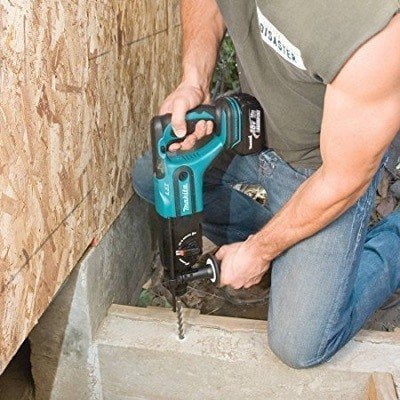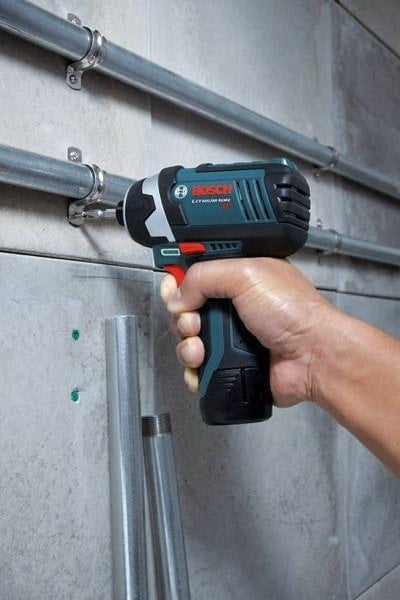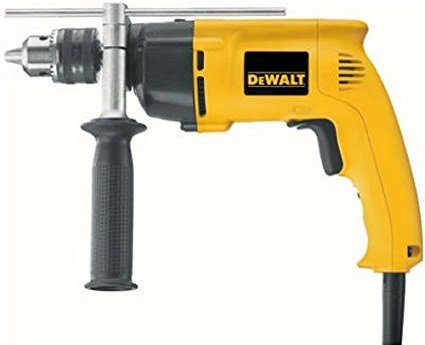Hammer Drill vs. Impact Driver: Which is Better for You?

There is a lot to keep up with when it comes to power tools as new and more advanced tools are always coming into the market. However, the power drill is and will probably be the most popular power tool for many years to come.
But, even the power drill now comes in various types with different capabilities. And one of the decisions that you might need to make is whether to go for a hammer drill or impact driver.
Ideally, you should have both types of drills as they perform different functions and so can be suitable for various projects. But, for many woodworkers and DIYers, one has to come before the other.
Choosing the right drill to have in the workshop can be overwhelming even for experienced woodworkers. But, if you know the capabilities of each tool it should be easy to choose.
If you only have to get either a hammer drill or impact driver, this piece will be helpful as we highlight their uses and also the pros and cons of each tool to help make your choice easy.
Hammer Drill

When you want to drill into hard surfaces such as concrete or when doing some masonry work or even home renovations the regular power drill will not be sufficient.
For drilling into concrete, bricks and other hard surfaces, you need something more powerful like the hammer drill as it makes the tasks look effortless.
The hammer drill is a heavy and large power drill, and it uses a hammer-like action which provides a more direct forward force on the drill bit to make it easy to drive into hard surfaces.
Hammer drills will provide either electro-pneumatic or cam-action hammering. And unlike the impact drivers, they are universal since they will accept both hex and round bits thanks to their 3-jaw chuck.
The hammer drill is always the best option when you want to drill drywall, concrete, bricks and most other surfaces. But most will also be adjustable back to a regular drill to perform the usual power drill and drive applications.
Pros
- More universal drill. The hammer drill is a more universal power tool than the impact wrench, and this is because it uses a 3-jaw chuck that will accept both the hex and round bits to make it suitable for various applications. The impact wrench, on the other hand, will use a locking collect that can only accept the hex-shanked bits.
- Best for driving into hard surfaces, masonry. Regular drills and impact drivers do not have the necessary power to drill or drive fasteners into hard surfaces. For this application, you need the large and more powerful hammer drill with its ‘hammering' action as it will drill and drive screws into almost anything from cement and concrete to drywall and bricks.
- Adjustable clutch. The adjustable clutch that comes with most hammer drill offers a significant advantage as it ensures that the tool does not apply too much force to small jobs. And so the hammer drill can match the power with the application and size of fasteners which is a feature that you will not get in most impact drivers.
Cons
- Larger and heavier. The hammer drill is a more powerful drill than the impact wrench, and so it has to be large and heavy to accommodate the extra power. Also, the hammering action can make it feel even heavier than it might be and so if you prefer a compact and lightweight power drill it might not impress you.
- Very loud. Although hammer drills might not be the loudest power tool, they still produce a lot of noise or at least more than the impact driver. The hammering action and the fact that it will vibrate in a back and forth motion are some of the things that make it quite a noisy tool.
Impact Driver

As a woodworker, there are certain situations that you will often encounter when dealing with drills. And they include things like burnt out drill bits, stripped screw heads and jammed screws.
While these might sound typical of any drilling or screwing job, they are in most cases as a result of using regular drills on tasks that they cannot handle. The need for something more potent tool for tougher drill and drive tasks has brought about the invention of the impact driver.
The impact driver is quite similar to the traditional drill but with the addition of impact gear mechanism.
This mechanism boosts the torque once the motor reaches a certain level of resistance when screwing. But unlike the hammering action, you get on the hammer drill the impact gear will pound the anvil in the same direction that the motor is already spinning.
Impact drivers use a hex shank, and unlike the 3-jaw chuck on the hammer drill, it will only accept hex-shanked bits and hence limiting its ability to accommodate different drill bits.
The ability to generate more power and control than the traditional drill makes the impact driver ideal for driving bolts, screws and many other fasteners.
However, it excels when it comes to driving big, long screws into some hard materials such as studs, concrete, and drywall.
Read More: Impact Driver vs. Drill
Pros
- Best for driving big, long fasteners. When you have long screws to drive into hard surfaces like concrete and drywall the impact driver is always the best option. While the hammer drill will excel in drilling into these hard surfaces, the impact driver seems to be the best option when it comes to driving fasteners into the surfaces.
- Compact and lightweight. The impact driver has as a shorter and stubbier profile, and it is also more compact and lightweight if you compare it to the large and heavy hammer drill. What this means is that it will be easier to handle and get used to than the hammer drill and this is more so for a beginner woodworker.
- Non-reactionary torque. Impact drivers will deliver high non-reactionary torque. Unlike regular and hammer drills they will not seize or twist in your hands when encountering resistive torque as you drive in fasteners or drill into the workpiece.
Cons
- Not ideal for finished woodworking. The impact driver will not be the best tool for use on your finished carpentry because extra power can kick in at any time provided the fastener needs it, and this can damage the material that you are handling.
- Limits the bits you can use. Impact drivers use a locking collect which restricts the drill/drive bits that you can use as it will only accept the hex-shanked ones. And this can be a significant shortcoming for woodworkers looking for a versatile drill for various applications.
The Bottom Line

As you try to figure out what to buy between the hammer drill and impact driver the main important concern on your mind should be what you will need to use more.
While both power tools are handy to have in the workshop, you might not necessarily need to buy both or at least not at the same time.
If you are looking for something to drill holes in a wide range of materials (especially for masonry works) and driving fasteners occasionally the hammer drill can be a good choice.
An impact driver, on the other hand, is light and compact and also more versatile than the hammer drill. It is one of the power tools that you are likely to use a lot for driving fasteners into hard materials.
Since you can also use the impact driver to drill holes, it will be handier in the workshop than the hammer drill. For most shop woodworkers the hammer drill is one of those tools that you will use only for occasional DIY jobs.
If you are a DIYer or woodworker and think that you will need both tools a great idea would be to buy a combo kit.
Best Hammer Drills
DeWalt DW511 1/2-Inch VSR Hammer Drill

Whether you want to drill some holes in steel, concrete, masonry or any other hard surface you can always trust the DeWalt DW511 hammer drill to supply the power that you need.
The hammer drill runs one a powerful 7.8 Amps motor that is capable of generating variable speeds of 0 to 46,000 BPM. And it also has a dual-mode design that makes it the perfect drill for working in a variety of hard surfaces.
Controlling the speeds should also be easy for every woodworker thanks to the two-finger rubber trigger. The hammer drill also has a 360-degree slide handle that will offer versatility in hand positioning to make it easy to handle.
And despite the impressive performance and the fantastic features the DeWalt DW511 only weighs about 4.2 pounds which is relatively lightweight for a hammer drill.
Skil 6445-04 7.0-Amp 1/2 Inch Hammer Drill

Skill 6445-04 also runs on the powerful 7.0 Amps motor that will make it an ideal power drill for the most demanding applications. The powerful hammer drill is also quite affordable despite its massive power.
This hammer drill uses a 1/2-inch keyed chuck that makes it possible to accept the larger diameter bits for cutting and woodworking.
There is also a side-assist handle on this drill that will ensure that you get more support when you need it for accurate drilling and driving. And it also includes a variable speed trigger that makes it possible to control the drilling speed.
The 2-finger trigger on the drill and the lock-on option are also a great addition as they give the woodworker more control.
Best Impact Drivers
Black & Decker BDCI20C 20V MAX Lithium Impact Driver

Black & Decker makes their model BDC120C for a woodworker or DIYer that is looking for a reliable impact driver for regular use.
The handy impact drivers have a higher performance transmission that will deliver up to 1375 in-lbs maximum torque to make driving long screws and drilling quick and easy.
Black & Decker BDCI20C is a compact and lightweight impact driver, and this makes it easy to use and handle even for beginner woodworkers that are using it for the first time.
The impact driver has a quick release 1/4-inch hex chuck, and it will offer some variable speeds of between 0 to 3,000 RPM and 0 to 39,000 BPM to make it quite a versatile power drill.
Black & Decker BDCI20C 20V MAX Lithium Impact Driver

If you are a professional woodworker or even a DIYer looking for an impact driver that can withstand the routine job site wear and tear and with minimum downtime, then DeWalt DCF885C1 is a great choice.
It delivers a maximum torque of 1,400 in-lbs which makes it ideal for various applications from making cabinets to framing. And it is also an easy-to-use impact driver that will come with an ergonomic design.
The impact driver measures just 5.55 inches and only weighs 2.2 pounds hence making it a compact and lightweight power driver that should be relatively easy to use.
With the built-in LED with a 20-second delay, you will have increased visibility when using this driver, and it offers one-handed bit loading for even more convenience.
Last Updated on August 15, 2020 by Tom Bradly




